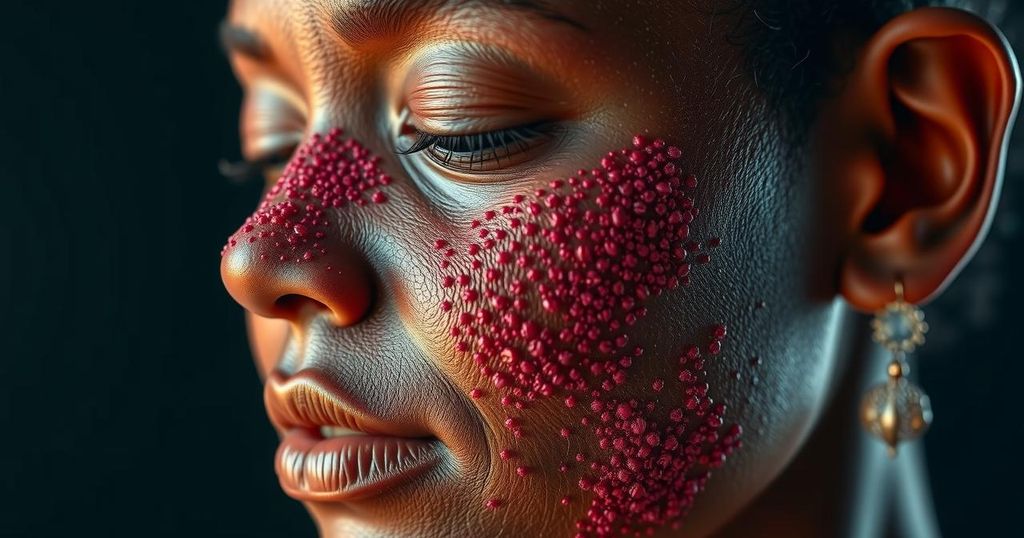The WHO Skin NTDs App, evaluated in a recent Kenya study, showed encouraging results, achieving an average sensitivity of approximately 80% with AI algorithms designed to assist in diagnosing skin-related neglected tropical diseases. Feedback from frontline workers highlighted increased confidence and improved patient relationships, supporting the potential for the App in public health initiatives. Future evaluations are planned in multiple countries to assess its effectiveness further.
On 25 November 2024, the World Health Organization (WHO) convened with Kenya’s Ministry of Health to review initial outcomes from a significant study assessing the WHO Skin NTDs App, which utilizes two innovative artificial intelligence (AI) algorithms. This pioneering study, executed in collaboration with various esteemed institutions including TDR and the University of Bristol, represents the first simultaneous evaluation of two distinct AI algorithms tailored for skin-related neglected tropical diseases (NTDs).
Implemented across five counties in Kenya, this study involved 40 health workers at primary healthcare facilities, who successfully captured 605 images of skin lesions from an equivalent number of patients during the period from June to October 2024. Dr. Joyce Onsongo, WHO’s NTD officer in Kenya, emphasized the public health challenge posed by skin diseases, which account for 10% to 30% of outpatient consultations, exacerbated by a dermatologist shortage in the country. The App aims to aid health workers in enhancing disease management capacity.
Preliminary findings revealed that both AI algorithms exhibited an average sensitivity of approximately 80% when benchmarked against diagnoses from three board-certified dermatologists. Dr. José Antonio Ruiz Postigo, a Medical Officer with WHO’s Global Neglected Tropical Diseases Programme, expressed that executing this study efficiently in remote areas underscored a significant achievement, deeming the initial results highly encouraging.
In addition to performance metrics, the study evaluated the feedback from frontline healthcare workers regarding their use of the App in clinical settings. Results from the User Version of the Mobile Application Rating Scale (uMARS) generated a mean score of 3.82 out of 5, and focus group discussions yielded a commendable score of 8 out of 10. Professor Carme Carrion, Principal Investigator from the Open University of Catalonia, noted the enhancement of healthcare professionals’ self-esteem and their increased trustworthiness from peers and patients alike.
Dr. Ruth Nyangacha, a research scientist at KEMRI, highlighted the App’s role as a collaborative partner in diagnosing skin conditions, which also contributed to reducing stigma for patients with skin NTDs. Moving forward, WHO plans an in-depth analysis of these results to determine future steps and intends to replicate this study in Brazil, Cameroon, Côte d’Ivoire, and India over the next biennium to assess the AI algorithms’ performance across diverse epidemiological scenarios.
The WHO Skin NTDs App represents a technological advancement in the diagnosis and management of skin-related neglected tropical diseases, which are prevalent in many developing regions, including Kenya. The integration of AI into healthcare, particularly for conditions that traditionally suffer from inadequate specialist services, aims to bridge the gap in disease management by empowering frontline health workers with better diagnostic tools. This collaborative study emphasizes the crucial role of feedback from healthcare professionals in refining the application’s efficacy and usability in real-world conditions, demonstrating the potential for improved health outcomes in underserved populations.
The initial assessment of the WHO Skin NTDs App in Kenya has yielded promising results, showcasing the capability of AI algorithms to assist healthcare workers in accurately diagnosing skin diseases. With an average sensitivity of 80% compared to expert dermatologists, the App not only enhances diagnostic confidence but also addresses significant healthcare challenges posed by a lack of specialists in the region. The positive feedback from frontline workers establishes a foundation for future applications, with intentions to expand the study globally, reflecting WHO’s commitment to tackling neglected tropical diseases comprehensively.
Original Source: www.who.int






